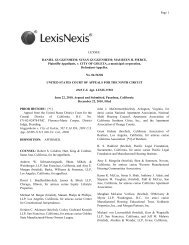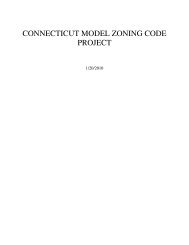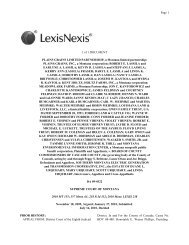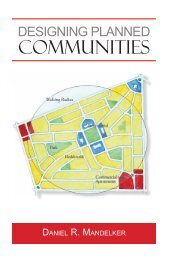Through a Glass Darkly: Measuring Loss Under ... - Land Use Law
Through a Glass Darkly: Measuring Loss Under ... - Land Use Law
Through a Glass Darkly: Measuring Loss Under ... - Land Use Law
You also want an ePaper? Increase the reach of your titles
YUMPU automatically turns print PDFs into web optimized ePapers that Google loves.
MEASURING LOSS UNDER MEASURE 37 615<br />
tion. The process is quick, clean, and extremely efficient and will be the basis for<br />
determining just compensation under Ballot Measure 37. 160<br />
Sercombe uses takings jurisprudence to buttress both his argument<br />
that the compensation be assessed at the earliest time the regulation<br />
“has the effect of reducing the fair market value of the property,” and<br />
his use of a rate of return as a multiplier to augment the assessed<br />
reduction.<br />
However, as highlighted above, there is some tension between this<br />
intent and the clear terms of the statute. The tension arises because, in<br />
conceptual terms, Measure 37 claims and takings claims are very different<br />
creatures. A thought experiment illuminates the distinction<br />
between the concept of takings and the rationale of Measure 37 claims.<br />
Let us imagine that there are four properties all restricted by one land<br />
use regulation. But only one of these properties was so severely<br />
restricted that it constituted a taking under the Penn Central 161 test.<br />
Assume that the taking was rescinded at the government’s request, so<br />
the taking was judged to be temporary in nature, and also that that the<br />
loss caused by the taking was $100,000. Should this $100,000 compensation<br />
be reduced because of the fact that when the regulation was<br />
enforced it caused, through (long-term) amenity effects, an increase of<br />
$5,000 in value to all four properties Probably not: this is an effect of<br />
the regulation and not of the taking. Indeed, as the amenity effects<br />
accrue to all four properties, it logically cannot be a consequence of the<br />
taking (as there has only been a taking in one of the cases). In comparison,<br />
under the Measure 37 regime all four properties would be able<br />
to claim for the facial devaluation caused to their land by the enactment<br />
of the land use regulation in question (including the property that was<br />
so badly affected it constituted a temporary regulatory taking) less any<br />
appreciation in value of their properties ($5,000) that the regulation<br />
had caused.<br />
Moreover, in takings claims the government receives a property interest<br />
in the affected property; even in temporary regulatory takings the<br />
government has a quasi-proprietary right akin to an option on the<br />
affected property. 162 With Measure 37 claims, the public pays, but gets<br />
no property right. A new right to payment accrues with any new<br />
160. Sercombe, supra note 122, at 10.<br />
161. See Penn Cent. Transp. Co. v. New York City, 438 U.S. 104, 131 (1978).<br />
162. See generally First English Evangelical Church v. County of Los Angeles, 482<br />
U.S. 304 (1987) (holding that the government had the option of keeping the regulation<br />
in place and paying compensation for the permanent taking, or rescinding the regulation<br />
and paying only compensation).<br />
ABA-TUL-07-0701-Sullivan.indd 615<br />
9/18/07 10:43:46 AM



